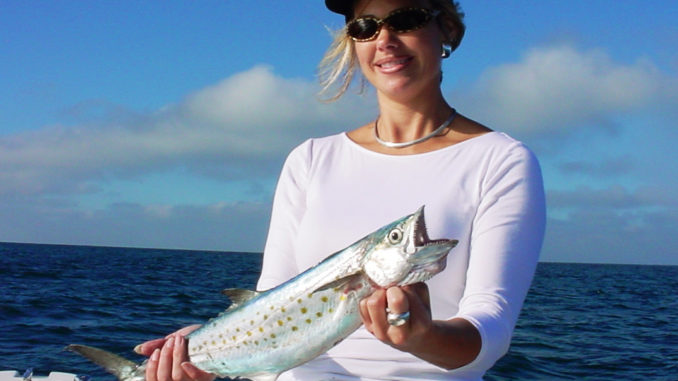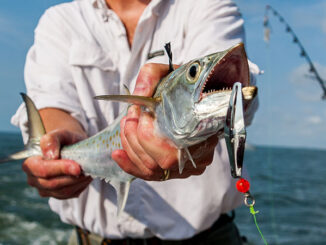
It is a bit of an oxymoron along the North Carolina’s southeastern coast, that as fall approaches, the water cools and the fishing heats up.
The cooling water prompts bait to leave the protection of the marshes and begin moving down the beaches. Larger fish move in to gorge themselves, building fat reserves for the fall migration and upcoming winter.
Spanish mackerel have been off the beaches all summer and have been feeding consistently, but the combination of cooling water and an influx of food really gets them going. This is a great time to catch Spanish, especially the larger fish that get more aggressive. Fishermen trolling small flashy lures will continue to catch fish, but a growing group of savvy fishermen switch their tactics to live baits to target larger fish.
Larger Spanish mackerel often gather around inlets, especially on a falling tide. As bait washes out, they chomp like a hungry man at an all-you-can-eat buffet. They eat a wide variety of baits, but their favorites are 3- to 4-inch finger mullet and 4- to 5-inch menhaden. These baits fished on light tackle will usually provide a morning or afternoon of reel-screaming fun and tasty, fresh fillets for dinner.
Baitfish don’t need navigable inlets. Falling tides flush mullet and menhaden from Rich, Mason, Masonboro, Carolina Beach, Cape Fear River, Lockwood Folly, Shallotte, Tubbs and Little River inlets. Hungry mackerel are usually waiting just a few feet into the clearer water beyond the tide lines. Fishermen can anchor and drift baits or work along the tide lines with live baits, ready to cast when activity is spotted. Sometimes Spanish can be seen cutting and jumping while chasing baitfish and often, hovering seagulls give away their location.
Most inshore outfits handle live-bait Spanish fishing well. They make a hard initial run, but it’s rarely more than 100 to 150 yards. This lights up the reel and gets the fisherman’s adrenaline going. A really big one might make a second long run, but most of the time the first run is the big one, followed by several slowing 10- to 30-yard runs.
The rig is simple too. It’s basically a live-bait rig for king mackerel in a smaller size. No. 3 wire with two No. 6 treble hooks about 3 inches apart allows hooking the bait through the nose and in the belly. Spanish hit hard and running, so the trailing hook catches many of them. Some fishermen use a single No. 6 treble hook just behind the head, with a few inches of No. 2 or No. 3 for cutoff protection and suspend the bait under a small float. Both methods usually produce well and are lots of fun.





Be the first to comment